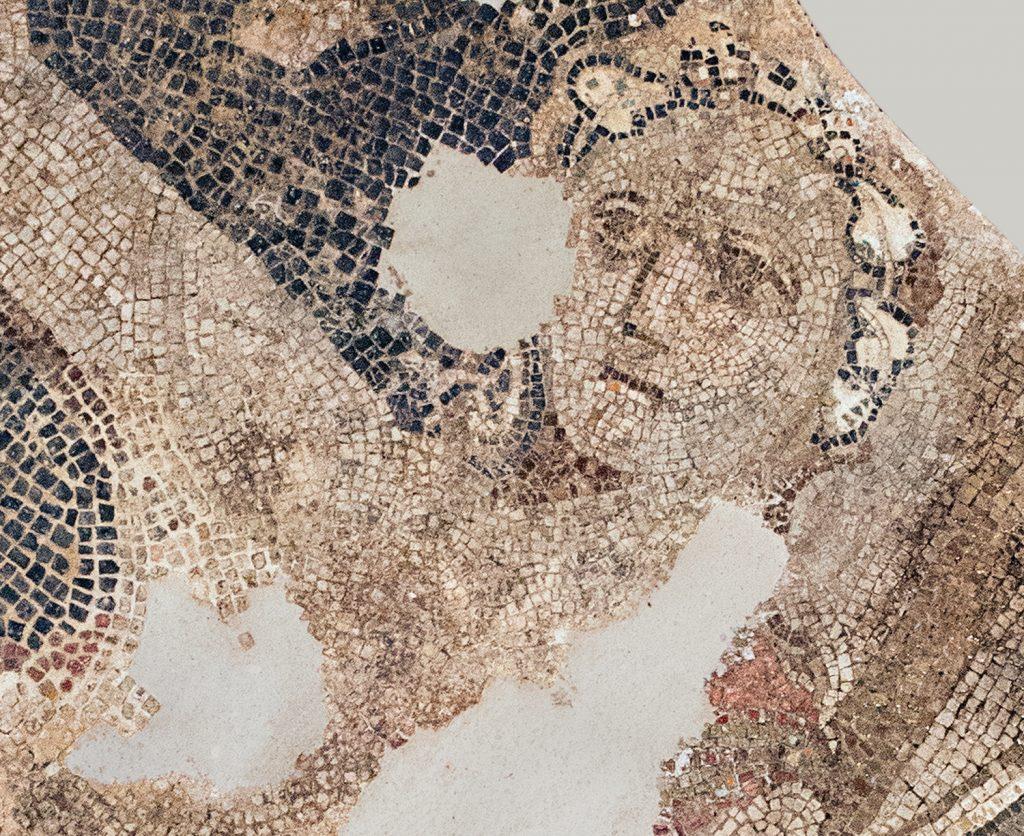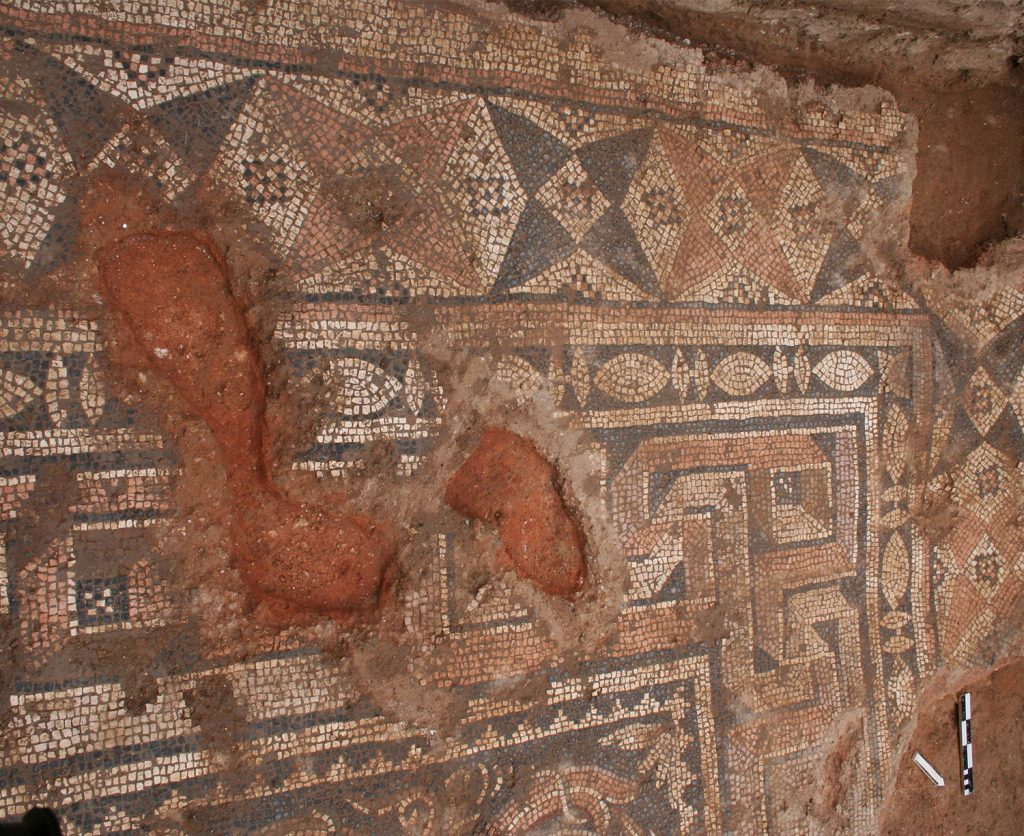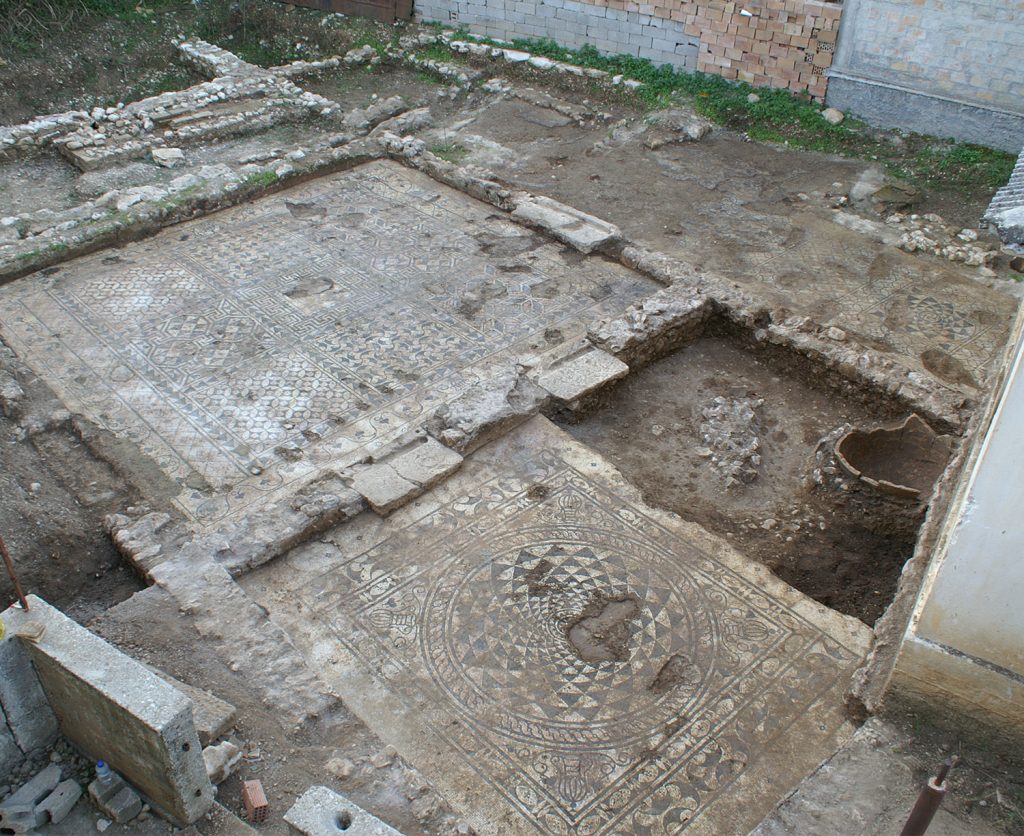The mosaic floors of Same
Mosaic floors stand out among the surviving remains of Roman Same’s buildings.
Mosaic floors that have been at times recovered in various excavations of Same, come from private and public spaces, they reflect the techniques and motives characterizing mosaic art in Roman and Late Roman Same, and represent the Roman way of life.
Generally, mosaic floors at Same seem to share in groups a common decorative vocabulary concerning their motifs and very often the way in which these are combined and the place they occupy, features that can almost certainly be ascribed to specific mosaic craftsmen – workshops. There is certainly a strong influence by contemporary workshops of the wider Roman world, of great Greek centres, such as Nikopole, as well as others in Italy.





